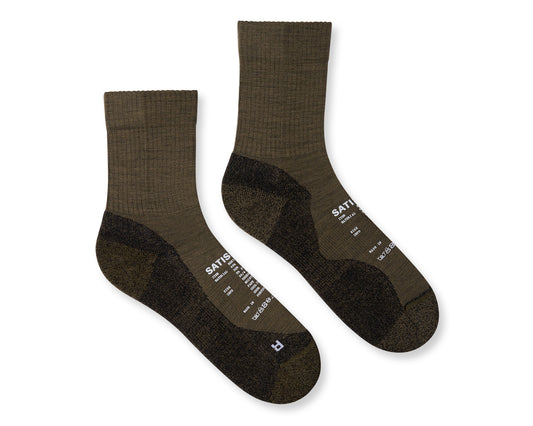
This is Welcome to Earth, the part of POSSESSED where we answer questions put to us by curious aliens. Today we have a letter from Prick Cowabunga. Prick writes:
Dear POSSESSED,
Howdy! My name is Prick Cowabunga, and I live at the bottom of the Atlantic Ocean. That’s actually where we all live, so technically, we’re not extraterrestrial. You know those mysterious drones over New Jersey? That was me and my boys. Anyway, why do you guys have two different units of measurement for Earth distances? Miles and kilometers seem like a bit of a nightmare, tbh.
Shout out to the homies Slunch, Gronk, Thoth, and Simon.
X Prick.
Terrific question, Prick, and you are absolutely right: having two different units of measurement is an absolute ballache, especially when discussing distance and running stats. Of the 195 countries on this planet, all but three have agreed to use kilometers and what’s known as the Metric System of measurement. The United States and Liberia still use an antiquated and whimsical system of miles, pounds, cups, and gallons known as the Imperial System, and then there’s Myanmar (formerly Burma), which uses a trickier version of Imperial, but we won’t get into that. So, yes, Prick, you read that right: only three countries are using miles, while the rest of us (192 countries) are using kilometers.
To understand why the United States, Liberia, and Myanmar stubbornly refuse to get along with the rest of the world, we first need to look at what miles and kilometers actually are.
As mentioned, the kilometer comes from the Metric System of measurement and is equal to 1,000 meters. A meter is made up of 100 centimeters, and each of those centimeters is equal to 10 millimeters. After that, we get into micrometers, nanometers, and picometers, but those units of measurement are so incredibly small (a picometer is one trillionth of a meter) that they are really only useful to scientists. So, that’s kilometers. Let’s take a look at miles.
An Imperial mile is equal to 1,760 yards. What’s a yard? Well, duh—a yard is three feet, and each of those feet is composed of 12 inches. What’s an inch made up of? Nothing. It’s an inch. You can halve and quarter it, but an inch is an inch is an inch. The end.
At this point, Prick, you’re probably thinking the Imperial System seems arbitrary and absurd—that’s because it is. It’s also really old. Imperial measurements were cobbled together from ancient Roman, Celtic, and Anglo-Saxon units of measurement (plus a few other farcical antediluvian units) in 1824. It has settled down a bit since then, but to give you an idea of how off-the-charts chaotic it was, precious metals were weighed using an Imperial measurement called the troy pound (64.79891 milligrams), but if you needed medicine, that was measured in the apothecaries’ pound, which, despite having a different name, was the same weight as the troy pound. Everything else was weighed using some random-ass measurement called the avoirdupois pound (453.59 grams), which came into use in 1303. Mind-bogglingly, the 722-year-old avoirdupois pound is still in use today. And while the troy pound is long gone, the Imperial System still employs the ounces that the troy was once composed of. I’ll stop there because I’m already getting a nosebleed, but suffice it to say: every measurement in the Imperial System seems to have been dreamt up by a medieval peasant who found some cocaine.

During the Age of Enlightenment—which was basically when everyone woke up and started thinking straight—the Metric System took shape and began garnering approval. The initial transition to metric occurred in Paris in 1795 and germinated district by district via the distribution of pamphlets. Over the next 200 years, the practical, rational, and not-at-all-fucking-ridiculous Metric System would steadily spread throughout Europe and the rest of the world. The Netherlands went metric in 1820, Chile in 1848, Japan in 1921, China in 1929, etcetera, etcetera. Ireland is the most recent country to convert, having begun transitioning in 1970 and finally going full metric (to be sure, to be sure, what’s da feckin’ craic) in 2005.
The remaining countries—again, the United States, Liberia, and Myanmar—are actually in the process of transitioning to metric as we speak, but it’s taking a long time (the U.S. passed the Metric Conversion Act in 1975), which is super annoying because when you call up your buddy in Liberia to brag about how many kilometers you ran and at what pace, he always says, ‘Cool, man, but what’s that in miles?’
Fortunately, Prick, there’s a trick that makes converting kilometers to miles super simple, and I’ll detail it here for you and the readers. It’s so very handy. It goes like this:
One mile is the equivalent of 1.609344 kilometers. So, with that in mind, all you have to do is multiply the number of kilometers by 0.621371 to get the distance in miles! For example, if you ran, say, 18.5 kilometers, you simply multiply that figure by 0.621371 to get 11.4953635 miles.
Alternatively, you could refuse friendship with people who still use the Imperial System, or just bypass all the arithmetic and drop a cinderblock on your own head.
You’re welcome!

















